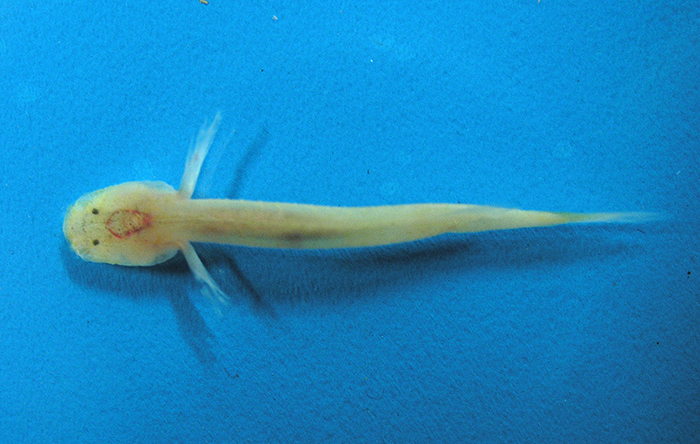
The Luciogobius Pallidus found in the Yongcheon Cave’s spring water has an 8.9% difference in its base sequence of DNA from the previously identified Luciogobius Pallidus inhabiting the waters off Jeju’s southern coast. (photo courtesy of the Cultural Heritage Administration)
A survey of the habitat and the species inhabiting the waters of Yongcheon Cave was conducted over a 19–month period, from July 2012 to February 2014. It revealed the existence of a rare type of Luciogobius Pallidus, announced the Cultural Heritage Administration on March 13. Unlike other fish of this species, it has a comparatively large head, light pink transparent skin and tiny atrophied eyes. Some 17 species of Luciogobius have been found worldwide, with seven discovered in Korea.
The Cultural Heritage Administration captured one specimen in order to conduct a full DNA analysis. The results of the mitochondrial cytochrome b base sequence analysis showed that the Luciogobius Pallidus found in the cave lake’s spring water has an 8.9% difference in its base sequence DNA from the previously identified Luciogobius Pallidus which inhabits the waters off Jeju’s southern coast. That makes the discovery an unprecedented first in the history of Korean zoology. Generally, in base sequence analysis of fish, a 4-5% difference would mean a different or new species.
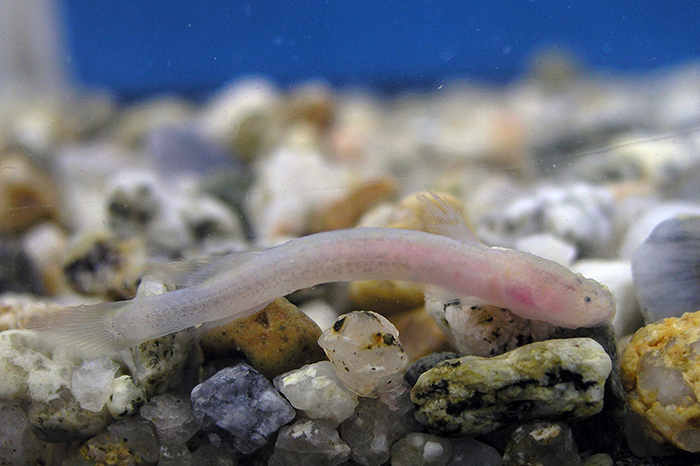
The new species of Luciogobius Pallidus, found in the subterranean spring waters of Jeju’s Yongcheon Cave, has a comparatively large head with light pink transparent skin. This is due to a lack of melanin pigment. (photo courtesy of the Cultural Heritage Administration)
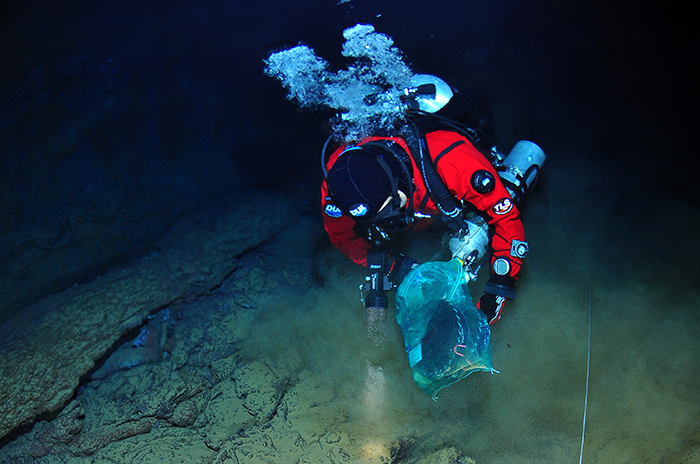
Underwater researchers participate in the survey of species that inhabit the waters of Yongcheon Cave. (photo courtesy of the Cultural Heritage Administration)
The Yongcheon Cave is estimated to have been formed 30-40 thousand years ago. The Luciogobius Pallidus seems to have evolved in this isolated area, after first being introduced to the cave with rising sea levels. The ocean poured seawater into the cave some 60 thousand years ago after a glacial epoch. The Cultural Heritage Administration noted that this discovery is very important in that it may help to shed light on the evolutionary path of vertebrates.
Further comparative research with Luciogobius Pallidus found in caves in Shimane Prefecture, Japan, will be conducted by the Cultural Heritage Administration to determine if the discovered fish is, in fact, an internationally recognized new species.
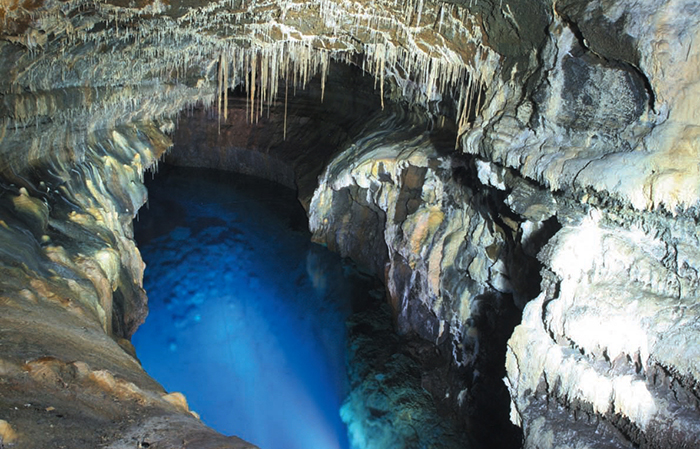
Yongcheon Cave Lake is approximately 800 meters long with the end blocked by piled up sediment, making it impossible to be explored further by divers. (photo courtesy of the Cultural Heritage Administration)
The Yongcheon Cave was accidentally discovered while setting up some telephone poles in Woljeong-ri, Gujwa-eup, back in 2005. The cave is approximately 3.6 kilometers long and the lake is about 800 meters long. The inside of the cave is lined with calcium carbonate speleothems only seen in limestone caves, making it a globally unique cave. Also, during an archeological and specimen research expedition in 2009, the findings included 22 items of earthenware from the eighth century Unified Silla, four iron relics, shellfish like abalone and limpets, charcoal marks and letter shapes on cave walls, showing that the cave was also an invaluable archeological site.
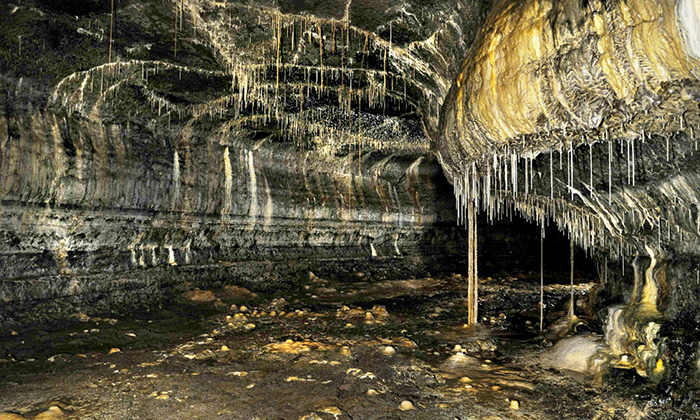
Discovered in 2005 by accident, the Yongcheon Cave is a unique specimen and was made a UNESCO World Natural Heritage site in 2007. (photo: Korea.net DB)
Due to preservation efforts, the Yongcheon Cave does not allow for civilian visitors and only a minimum number of people are allowed in for academic and monitoring purposes.
By Jeon Han, Paik Hyun
Korea.net Staff Writers
hanjeon@korea.kr

